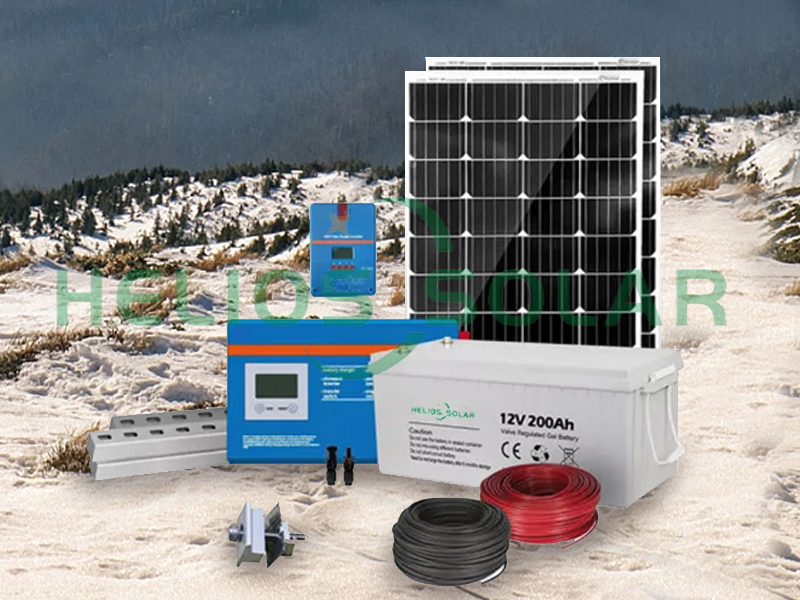In recent years, off-grid solar systems have gained popularity as a sustainable and cost-effective solution for providing power in remote areas or locations with limited access to traditional grids. Installing an off-grid solar system has many benefits, including reducing dependence on fossil fuels, lowering energy costs, and increasing energy independence. In this comprehensive guide, we’ll explore the key components and steps involved in installing an off-grid solar system.
Components of an off-grid solar system
Before delving into the installation process, it’s necessary to understand the key components of an off-grid solar system. These components include solar panels, charge controllers, battery packs, inverters, and electrical wiring. Solar panels are responsible for capturing sunlight and converting it into electricity, while charge controllers regulate the flow of electricity from the solar panels to the battery pack, preventing overcharging. The battery pack stores the electricity generated by the solar panels for later use, providing power when the sun is low. Inverters convert the direct current generated by solar panels and battery banks into alternating current, suitable for powering home appliances. Finally, wires connect the various components of the system, ensuring the seamless flow of power.
Site assessment and design
The first step in installing an off-grid solar system is to conduct a thorough site assessment to determine the solar potential of the location. Factors such as solar panel angle and orientation, shading from nearby buildings or trees, and average daily sunlight hours will be evaluated to optimize the system’s performance. Additionally, the property’s energy consumption needs will be assessed to determine the size and capacity of the solar system required.
Once the site assessment is complete, the system design phase begins. This includes determining the number and location of solar panels, selecting the appropriate battery bank capacity, and choosing the right inverter and charge controller to meet the property’s energy needs. System design will also take into account any future expansion or upgrades that may be required.
Installation process
The installation of an off-grid solar system is a complex process that requires careful planning and attention to detail. The following steps outline the typical installation process:
1. Install solar panels: Solar panels are mounted on a strong and secure structure, such as a roof or ground-mounted racking system. Adjust the angle and direction of solar panels to maximize sunlight exposure.
2. Install the charge controller and inverter: The charge controller and inverter are installed in a well-ventilated and easily accessible location, preferably close to the battery pack. Proper wiring and grounding are critical to ensuring the safe and efficient operation of these components.
3. Connect the battery pack: The battery pack is connected to the charge controller and inverter using heavy-duty cables and appropriate fuses to prevent overcurrent and short circuits.
4. Electrical wiring and connections: Install electrical wiring to connect the solar panels, charge controller, inverter, and battery bank. All connections must be properly insulated and secured to prevent any electrical hazards.
5. System testing and debugging: Once installation is complete, the entire system is thoroughly tested to ensure that all components are functioning as expected. This includes checking the voltage, current and power output of the solar panels, as well as the charging and discharging of the battery pack.
Maintenance and monitoring
Once installed, regular maintenance and monitoring are critical to ensuring the long-term performance and reliability of your off-grid solar system. This includes regularly inspecting solar panels for dirt or debris, checking that battery packs are charging and discharging correctly, and monitoring overall system performance to identify any potential issues.
In summary, installing an off-grid solar system is a complex but rewarding endeavor that provides many benefits, including energy independence and environmental sustainability. By understanding the key components and following the correct installation process, homeowners can harness solar energy to meet their energy needs, even in remote or off-grid locations. With careful planning, professional installation, and ongoing maintenance, off-grid solar systems can provide clean, reliable, and cost-effective power for years to come.
If you are interested in off-grid solar systems, welcome to contact Radiance to read more.
Post time: Apr-12-2024


